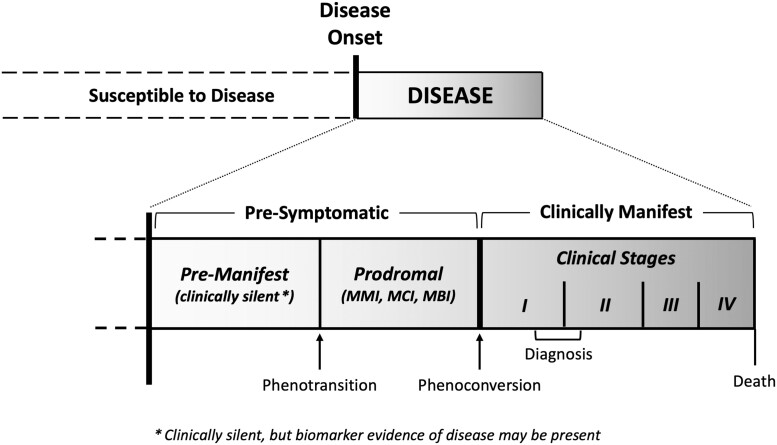Figure 2.
Conceptual framework for studying pre-symptomatic ALS. The natural history of ALS, as a biological entity, includes a pre-manifest (i.e. clinically silent) stage that is typically not observable except when disease-related biomarker abnormalities are detected. These biomarker abnormalities, if present, serve as the first (and only) indication that the disease process has begun. The pre-manifest stage may be followed by a prodromal stage that is characterized by mild motor, cognitive or behavioural impairment (MMI, MCI or MBI, respectively); the prodromal stage is most likely to be observed in individuals with more slowly progressing disease. In turn, this prodromal clinical stage gives way to clinically manifest ALS. The term phenotransition describes the transition from the pre-manifest to the prodromal stage, and the term phenoconversion describes the transition to clinically manifest ALS. The shaded gradient reflects the fact that these periods exist along a continuum. Note that the figure is not drawn to scale, as the relative duration of each period is largely unknown and may vary between individuals.

